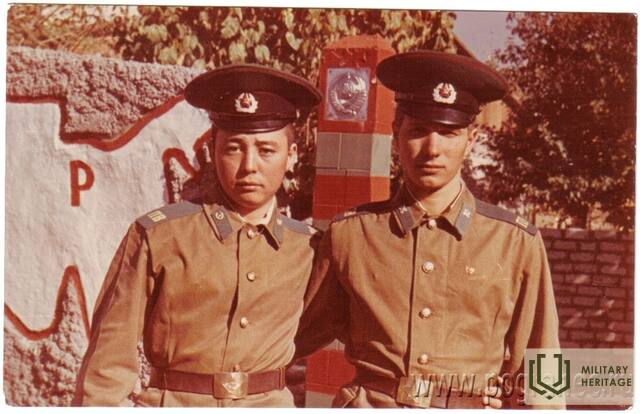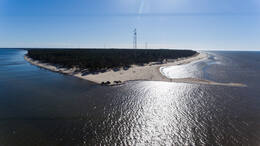Kolka Coast Guard observation tower
The border guard tower is hidden in the last pines of the Cape of Kolka, where the border guard post was constantly located during the USSR and the small masonry wall next to it is now abandoned and destroying destiny.
The top of the tower now looks a little invaded, although after the declaration of national independence, our border guards also observed the sea coast, which now seems to have been replaced by modern electronic radar equipment, which probably meets all NATO standards. During the USSR, border guards observed and controlled the waters of the Irbe Strait from this tower, and at that time it was often said that even a duck could not swim through this strait without the knowledge of the border guards. The Irbe Strait separated the Small Sea or the Gulf of Riga from the Great Sea or the open waters of the Baltic Sea. A concept like the High Seas has long since disappeared from our vocabulary with the departure of the Soviet army and has been successfully forgotten. The high seas - a concept that originated during the Cold War and meant an area from which a threat to the vast Soviet land could arise and come, or, no less bad - someone who could decide to cross the Iron Curtain and get across the sea to the blowing West, taking with him an important and inexpressible secret of the Soviet Union. Therefore, this strait, which is so similar to the neck of the bottle, was very controlled and watched. And these functions were performed not only by the armed border guard and a radar station at the end of the Kolka Cape tower with binoculars and Kalashnikov machines, but also by the border guard patrol ships, which were constantly in this strait. Each boat and vessel crossing the strait was carefully inspected as necessary. These sailors in particular did not like sailors, whom they probably considered to be capitalist-rich style runners-up. That is why often deliberately border guard patrol ships approached very quickly and broke the sides of their yachts by mooring on their sides - say, there is nothing to wander around here! This is how many yachts that passed through the Irbe Strait were deliberately inspected. It is also worth noting that in Soviet times, appearing on the Cape of Kolka to enjoy the roar of the sea and the distant Kolka lighthouse was not so easy, because there was a special area that could not be entered so easily, you needed passes. And if someone pulled the camera out of their bag here, it could end up with forced film lighting at best or detention, identification and maybe even interrogation at worst ....
For sailing - the former captain of the yacht "Spaniel" Egons Stieģelis.
Related timeline
Related objects
German army coastguard searchlight site in Usi and border guard post in Kolka
No military infrastructure was planned in Cape Kolka, except for several offshore lighthouses that were rebuilt over a long period of time, either before World War I, during World War I or during World War II. Coastal defence batteries were planned for the narrowest part of the Irbe Strait, between the Sirves Peninsula and the Michael Tower Lighthouse.
The only fortifications of a military nature appeared at the end of 1944, when the German Army Group North was preparing to repel possible landings by the Soviet Baltic Fleet. In the spring of 1945, after the ice retreated, two batteries of the 532nd Artillery Division defended the coast at Cape Kolka. Battery 7 with four 75 mm guns and three 20 mm zenith guns. Battery 8 with four 88 mm mortars, three 20 mm mortars and an 81 mm mortar. The anti-deserter infantry garrison consisted of one of the most famous coastal defence units of the German Navy, the 5th Company of the 531st Artillery Division. Although it was an artillery unit by name, it was an infantry unit by deployment, which started its war in June 1941 at Liepāja. The unit was then garrisoned on islands in the Gulf of Finland and later took part in the fighting on the island of Saaremaa. The remnants of the division were reformed into one company and, reinforced with seven anti-tank guns and three 20 mm anti-aircraft guns, deployed at Cape Kolka.
The Soviet naval landing operation never took place and the German units capitulated in May 1945.
The military infrastructure in Cape Kolka began to be built after the Second World War, when Soviet border guard posts were deployed here and Kolka, like the entire Kurzeme coast from Mērsrags to the Lithuanian border, became a closed zone







